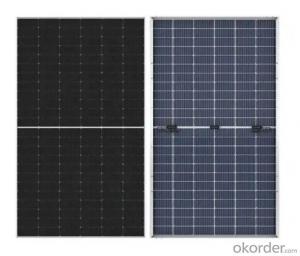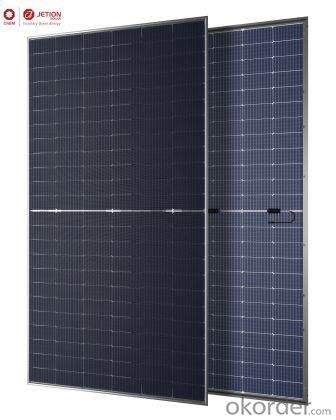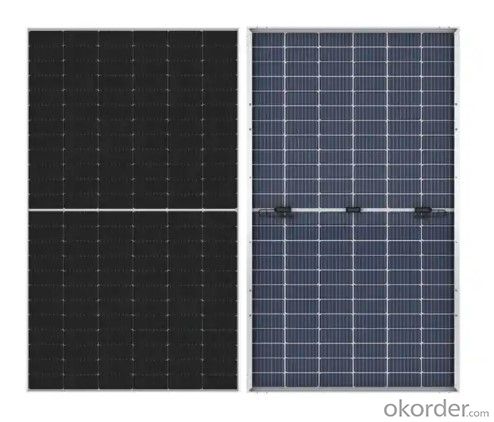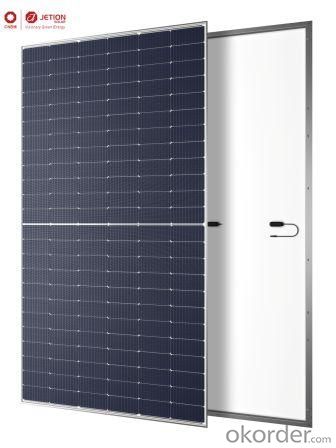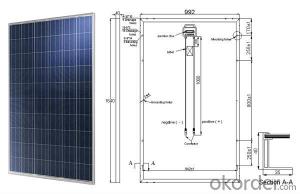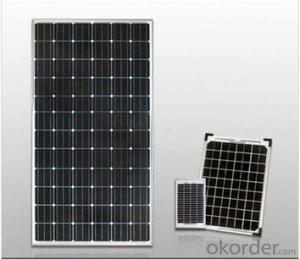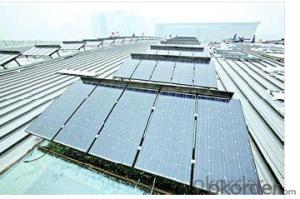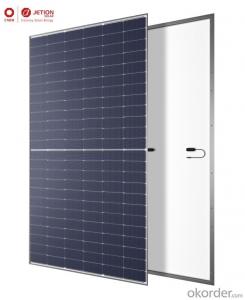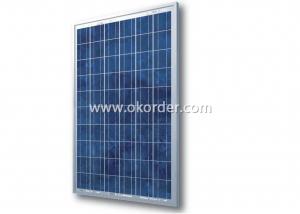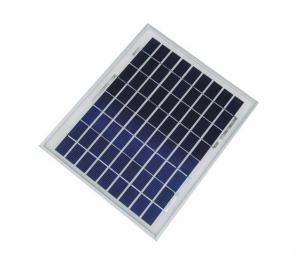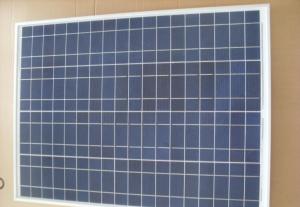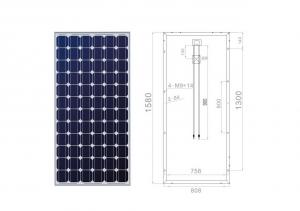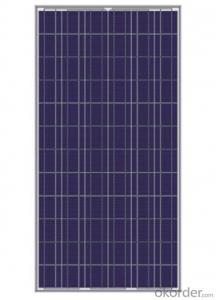PERK Pv Module Solar Panel Solar Photovoltaic Panels 550w Bifacial Solar Panels NCQ
- Loading Port:
- SHANGHAI
- Payment Terms:
- TT OR LC
- Min Order Qty:
- 5 pc
- Supply Capability:
- 100 pc/month
OKorder Service Pledge
OKorder Financial Service
You Might Also Like
Specification
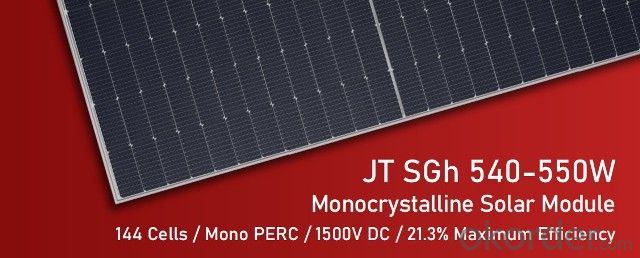
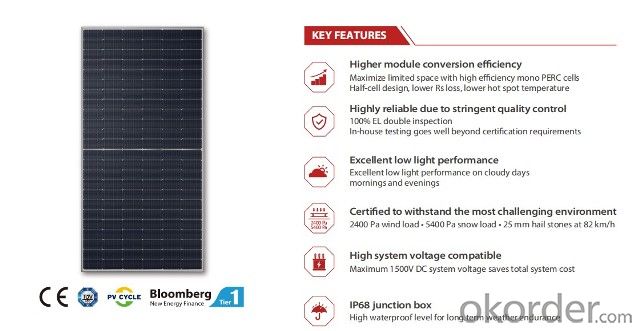
ELECTRICAL DATA*STC
TYPE(Tolerance:0-+5W) | JT540 SGh | JT545 SGh | JT550 SGh |
Maximum Power Pmax (W) | 540 | 545 | 550 |
Maximum Power Voltage Vmp (V) | 41.7 | 41.9 | 42.1 |
Maximum Power Current Imp (A) | 12.95 | 13.01 | 13.07 |
Open Circuit Voltage Voc (V) | 49.6 | 49.8 | 50.0 |
Short Circuit Current Isc (A) | 13.80 | 13.86 | 13.92 |
Module Effciency (%) | 20.9% | 21.1% | 21.3% |
STC: Irradiance 1000W/m², Cell Temperature 25°C, Air Mass AM1.5
Measuring tolerance: :±3%
ELECTRICAL DATA *NMOT
Maximum Power Pmax (W) | 405.21 | 409.25 | 413.31 |
Maximum Power Voltage Vmp (V) | 39.0 | 39.2 | 39.4 |
Maximum Power Current Imp (A | 10.39 | 10.44 | 10.49 |
Open Circuit Voltage Voc (V) | 46.6 | 46.8 | 47.0 |
Short Circuit Current Isc (A) | 11.12 | 11.16 | 11.2 |
NMOT: lrradiance at 800W/m², Ambient Temperature 20℃, Wind Speed 1m/s
MECHANICAL DATA
Solar Cell Type | Mono 91x182 mm(3.6x7.2 inches) |
Number of Cells | 144[2 x(12x 6)] |
Module Dimensions | 2278×1134×35 mm(89.7×44.6×1.4 inches) |
Weight | 29.0 kg(63.9 lb) |
Front Cover | 3.2 mm (0.13 inches), high transmission, AR coated tempered glass |
Back Cover | White composite film |
Frame | Silver, anodized aluminium alloy |
J-Box | ≥IP68 |
Cable | 4.0 mm² solar cable, 300 mm(11.8 inches) |
Number of diodes | 3 |
QUALIFICATIONS & CERTIFICATES
v IEC 61215,IEC 61730, IEC 62941
v ISO 9001: Quality Management System
v ISO 14001: Environment Management System
v ISO 45001: Occupational Health and Safety
JETION SOLAR
As a member of CNBM - a Fortune 500 company, Jetion Solar provides various product solutions,global EPC service and financing.
lts standard and high-efficiency product offerings are among the most powerful and cost-effective in the industry.
Till now, Jetion Solar has cumulatively more than 10 GW module shipment and 1 GW global EPC track records.
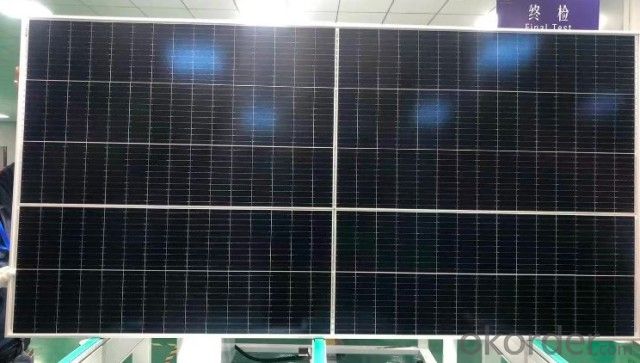
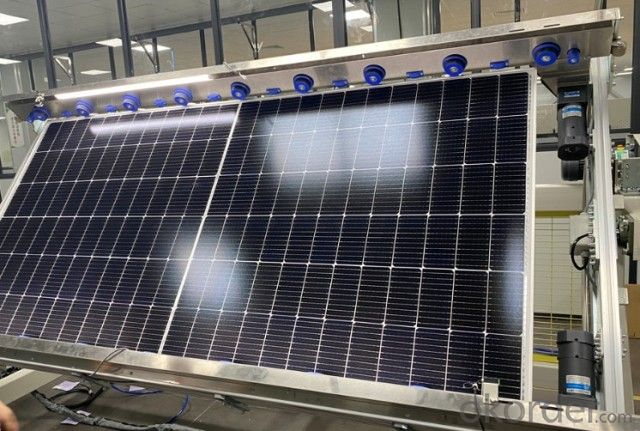
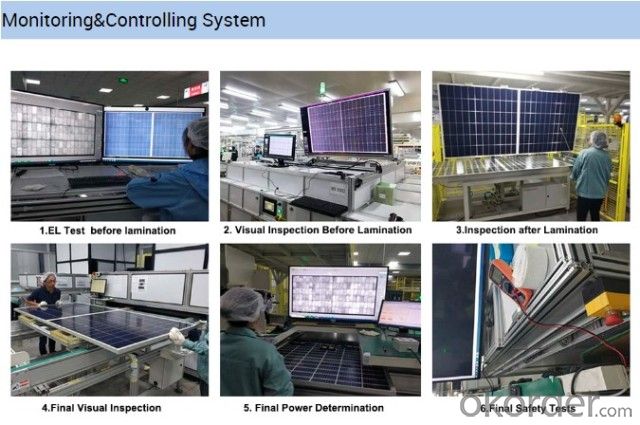
- Q: Solar panel experiment ?wat are some experiments with solar panels that has not yet been proven? ideas
- You okorder /
- Q: how much electricity will produce in Kwh by a 000 W solar panel in a sunny tropical area per day (good sunlight at least 0 hour a day)
- The equivalent full sun hours in the tropics is around 5h a day, though the sun is around for 0 or more hours. This is to do with angles of a fixed panel. If the panel tracks the sun, it would be a bit longer, maybe 8 hours. The panel is rated for 000W in equivalent full sunlight at 25°C. As the panel temperature increases to 50 or 60°C, de-rate to 800W, and multiply that by 5h = 4kWh. This varies over the year. This is the energy the panel is capable of providing, which depends on just what it is connected to. Generally an MPPT controller (maximum power point tracking) will get the best result. If charging a battery, the energy is less, because of charging losses. This is a rubbery figure because the battery may not be a simple charge/discharge cycle, but allow about 75% of the 4kWh above. Any shading on part of the panel can reduce or stop production, or cause damage to the panel even. This is what the brown marks sometimes seen on some cells in a panel are usually caused by.
- Q: Can solar panels be used in areas with limited sunlight?
- Yes, solar panels can still be used in areas with limited sunlight. While solar panels are most efficient in direct sunlight, they can still generate electricity even in areas with less sunlight. The panels can capture diffuse sunlight and convert it into usable energy. However, the overall energy output may be lower compared to areas with abundant sunlight. Additionally, advancements in solar technology and the use of more efficient panels can further enhance their performance in areas with limited sunlight.
- Q: Can solar panels be recycled?
- Yes, solar panels can be recycled. They are made of materials like glass, aluminum, and silicon, which can all be reclaimed and reused. Recycling solar panels helps reduce waste and environmental impact, while also recovering valuable resources for future production.
- Q: I am told there are night vision goggles to see at night due to invisible light still hitting earth. I am also told that there are other beams, x-rays etc hitting earth.Why couldn't they invent a solar panel with dual power in the day?It could harness both visible and invisible light, and at night be single?Anyone know why they can't make an invisible light solar panel?Is this possible?What happens if future cars have night vision windshields instead of lights?
- Solar panels work when the metals from which they are made release electrons when hit by radiation. There is a threshold that, below a certain wavelength/frequency, they do not eject electrons. As frequency increases, more electricity flows. Radio and infrared are the least energetic electromagnetic waves.
- Q: Do solar panels require a specific type of mounting system for installation?
- Yes, solar panels do require a specific type of mounting system for installation. The type of mounting system depends on various factors such as the location, roof type, and desired angle of the solar panels. Some common types of mounting systems include roof mounts, ground mounts, and pole mounts.
- Q: Can I add reflectors or mirrors around the solar panels to increase the power they generate?
- You could (an example of concentrating sunlight is called cloud gain, where the edge of a cloud will intensify sunlight as it passes between the sun and your panels), but that will make your panels run hotter and will probably reduce their life. It's better from a system design standpoint to simply get another panel or two. DK
- Q: Here's a little idea I though might help everyone out in Iraq a little: How about if the US mass produces solar panels that are small enough to carry (maybe one foot by three feet) that have a regular power outlet on them to the Iraqis? We could send convoys to the people waiting in line to buy gas and give each person one free solar panel. Why?. A lot of people are buying gas to run generators for air conditioning, not to fuel vehicles. 2. It would help reduce the gas lines if people only needed gas for cars instead of their generators too.3. It would help reduce the fighting over the power grid if people didn't need the grid for their own electrical power.My theory is, once every family in Iraq has enough of these panels that they don't even care about the power grid (during the daytime anyway) it would be much easier to fix the power grid. Maybe these solar panels could even connect to and add to the power grid.
- The power we get from sun's radiation is limited by the area we receive sunshine. One square meter will have kW power from sun's radiation. For current technology, the conversion efficiency is about 8%. So one foot by three foot of solar panel only produce 80Watt. This will not be enough for your application.
- Q: Mitsubishi Solar Panels For Home Installation: How Much Do The Panels Cost?
- Panels will cost in the range of 300-600 dollars for about 00 watts on average ( enough for one large lightbulb to run a few hours a day). The rest of the system needed will cost $2500-$4000. That is for the equipment. Cost for Installation?? Figure about 0 year life on equipment. It will probably never pay back investment, but will cut power usage. You can reduce power usage much more cost effectively buy simply conserving (Hot water temp. down, CFE bulbs, Better insulation, Better windows, Heat/Air a little colder/hotter, Attic ventilation, Geo Thermal heating/colling system). All of these measures will pay back sooner and save power usage. Solar will never pay back without major subsidies from the taxpayers. Particularly if in an area that has many cloudy days. Check it out. The calculations are basic and the facts are available if you really want them. Don't believe any salesmen or Environmentalists. They don't want you to know the facts.
- Q: What are the different types of solar panels?
- There are three main types of solar panels: monocrystalline, polycrystalline, and thin-film. Monocrystalline panels are made from a single crystal structure, offering high efficiency but also higher costs. Polycrystalline panels are made from multiple crystal structures, slightly less efficient but more cost-effective. Thin-film panels use a layer of semiconductor material, providing the lowest efficiency but the ability to be flexible and lightweight.
Send your message to us
PERK Pv Module Solar Panel Solar Photovoltaic Panels 550w Bifacial Solar Panels NCQ
- Loading Port:
- SHANGHAI
- Payment Terms:
- TT OR LC
- Min Order Qty:
- 5 pc
- Supply Capability:
- 100 pc/month
OKorder Service Pledge
OKorder Financial Service
Similar products
Hot products
Hot Searches
Related keywords

